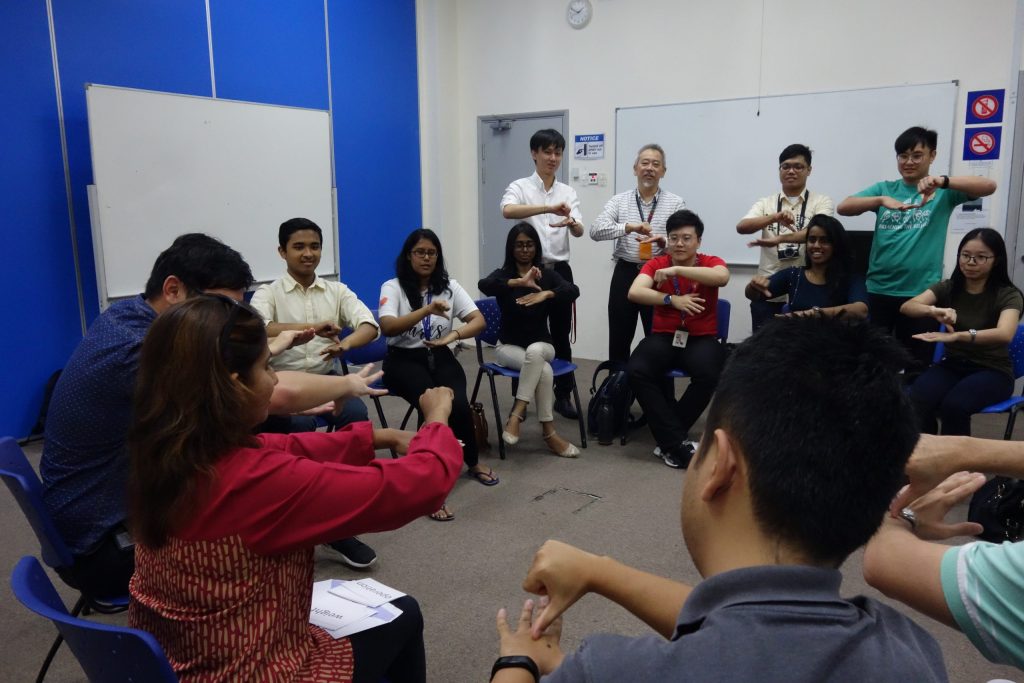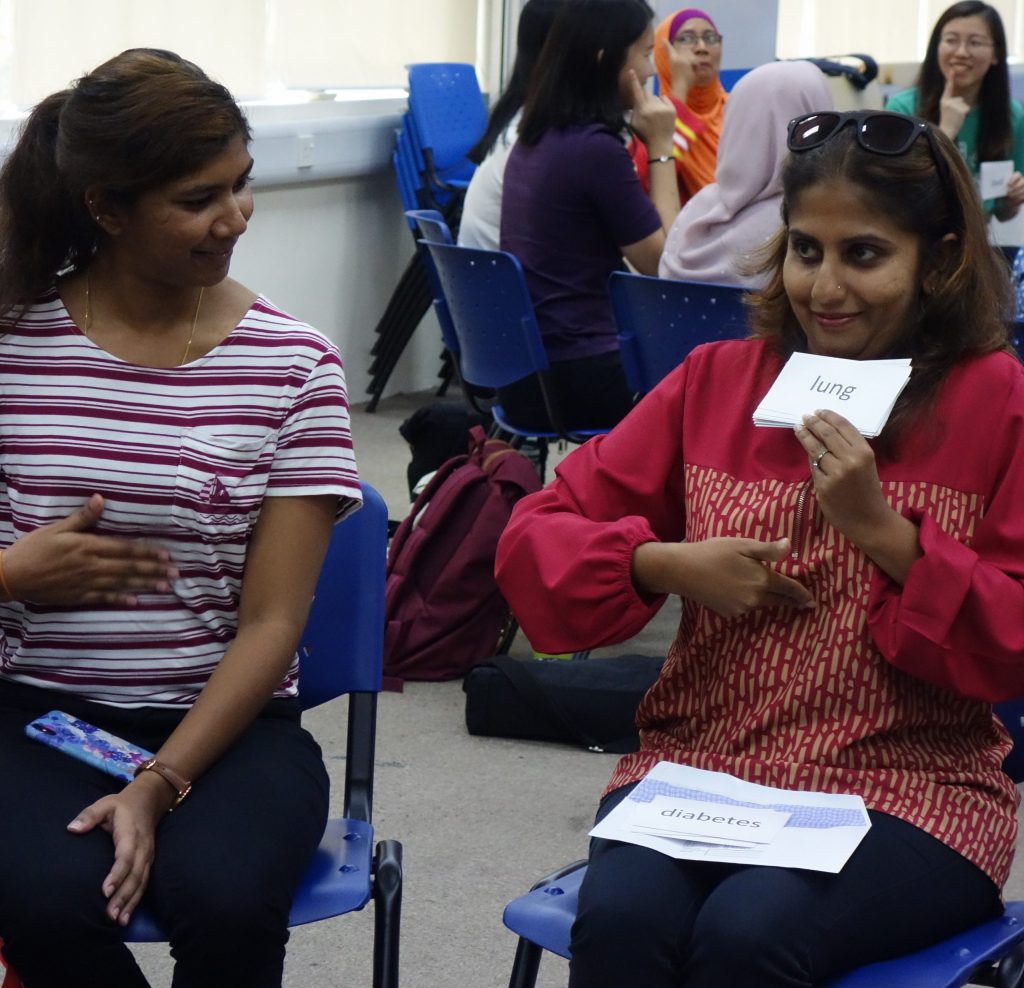12 October 2019 – IMU Cares in collaboration with the Emergency Medicine Society (EMS) and IMU Student Representative Council (SRC), organised the first Sign Language Workshop held at IMU Clinical Campus Seremban. EMS advisor, Dr Rosdara Masayuni emphasised that the aim of this workshop – is to highlight the importance of learning sign language in communicating with the deaf and mute community, especially when they are presented as patients in the Emergency Department or any healthcare centres.
The workshop was facilitated by representatives from Negeri Sembilan Sign Language Deaf Association (NESDA). NESDA is a non-profit organisation established in 2006 that aims to improve the quality of life of the deaf and mute community in terms of knowledge, skills, sports, human rights as well as promoting leadership qualities.
The representatives who presented at the workshop, volunteers and facilitators include the former president and the current president of NESDA, Puan Sariah and Mr Amin respectively, Puan Azlina, the counsellor of NESDA, Mr Mohd Nasir, Puan Rafikah and Miss Geraldine.
A total of 85 participants attended the workshop, including IMU medical students, lecturers and staff from Emergency and Trauma Department at Hospital Tuanku Ja’afar (ETD HTJ), Seremban.
The workshop began with a welcoming speech by Datuk Soo Thian Lian, the Project Leader/Chairman of this IMU Cares activity. This was followed by a talk on “Deafness and the Origin of Sign Language” by Dr Rafiq, an otorhinolaryngologist.

Puan Sariah then conducted an interesting session on “Introduction of sign language and its fundamentals (basic alphabets and numbers)”. The talk gave participants an idea of sign language, the correct position of hand gestures and highlighted the common mistakes made while using sign language.
In the afternoon session, participants were divided into small groups where the facilitators taught participants on the use of sign language for medical terms and common words used. Every participant was able to understand and apply the basic vocabulary and communicate with alphabets at the subsequent practical session.


The next session saw the deaf and mute community sharing their experience on the difficulties faced by them and their stories were eye-opening for us to learn from. They are being neglected and treated unequally as compared to normal people and that has always been a daily struggle for them. Thus, we need to learn to be more patient when communicating with the deaf and mute community.
The highlight of the workshop was the KAHOOT! and game sessions for participants. Prizes were given to winners of these sessions. Overall, the participants expressed their appreciation for the opportunity to attend this workshop as they were exposed to a different community and the way to communicate with them.
Written by Kelly How Suet Yue, Kor Win Sheng, Michael Lim Yang Song


No approved comments.